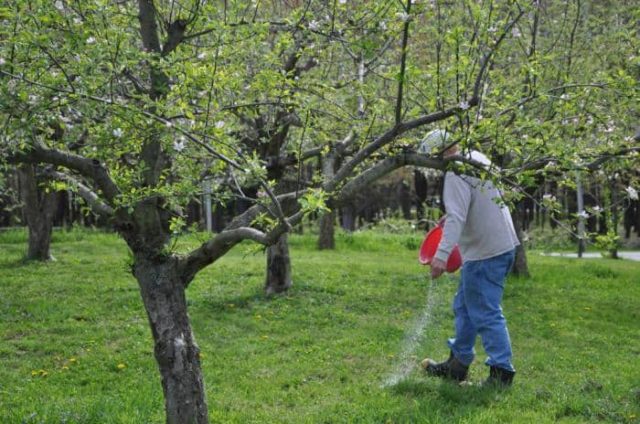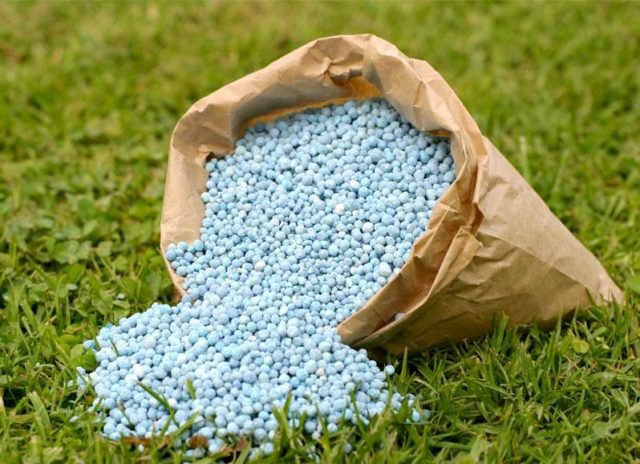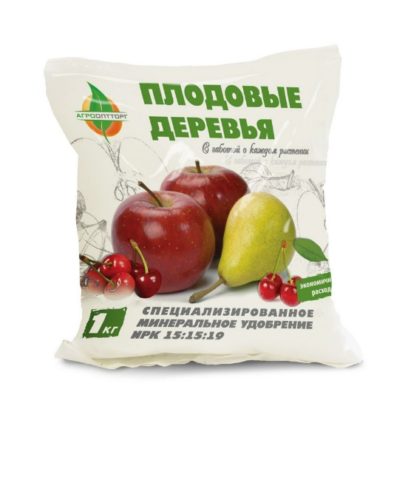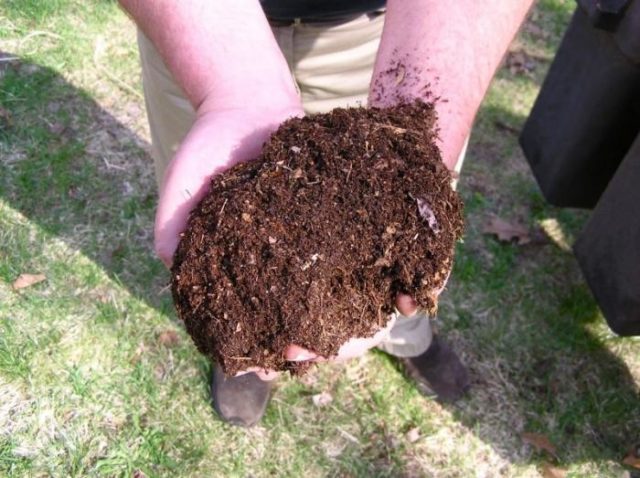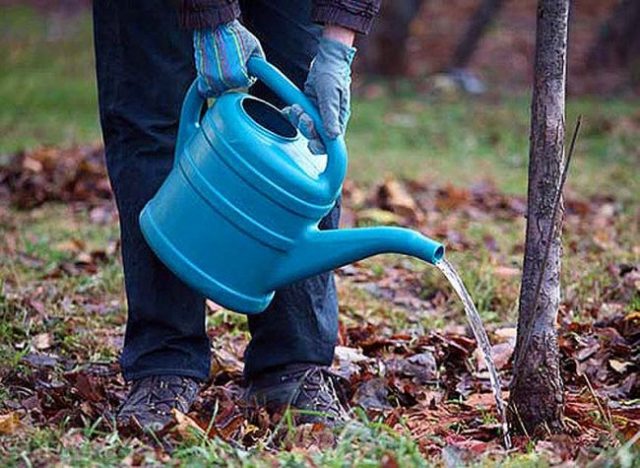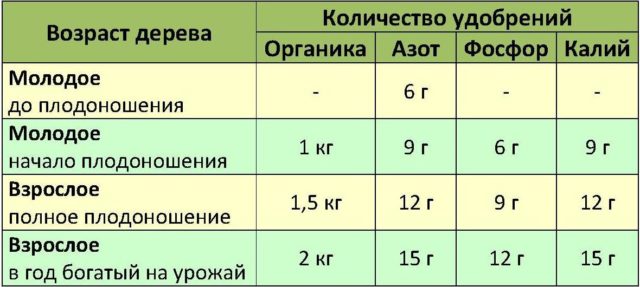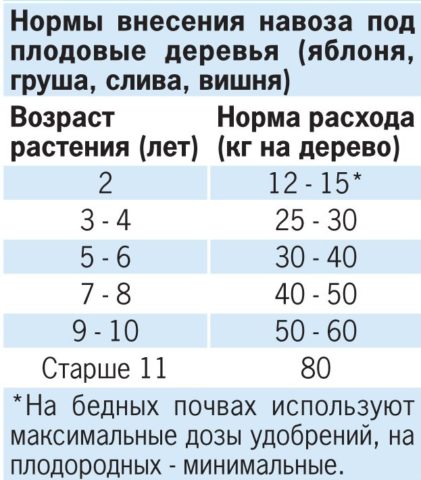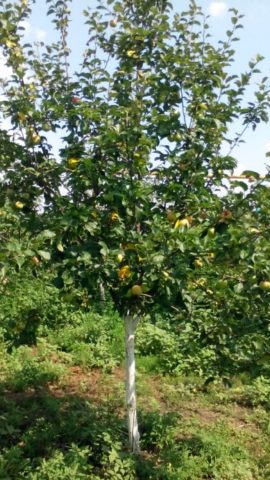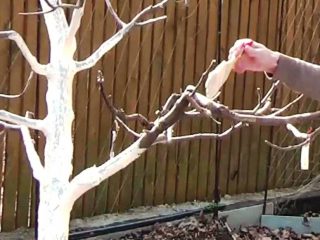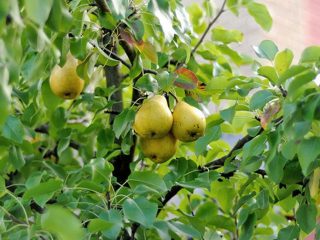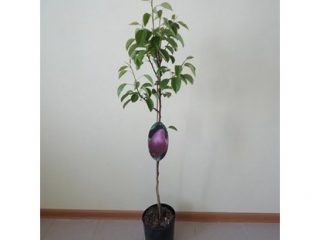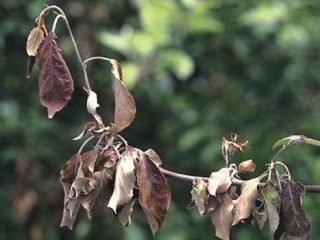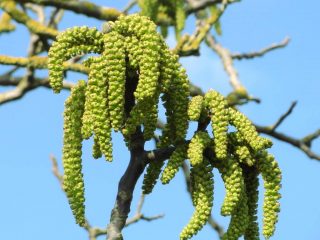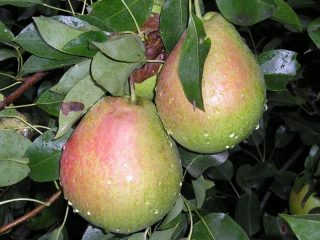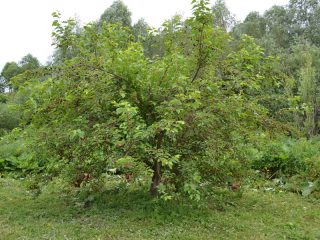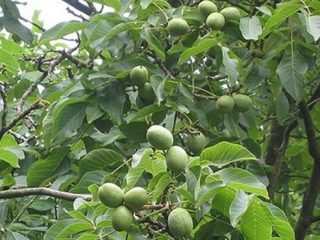Content
Autumn fertilizing of fruit trees is one of the mandatory seasonal procedures. A plant that has used up nutrients to produce fruit will “rest” next year. For many gardeners in the past, the situation “this year it’s thick, next year it’s empty” was normal due to the fact that there were no high-quality fertilizers even on collective farms. And they were practically not sold into private hands. The use of less concentrated natural organic fertilizers led to the fact that the trees “took time out.”
The importance of autumn feeding of fruit trees
To produce fruit, garden crops spend a lot of potassium and phosphorus, approaching wintering quite depleted. To prevent the tree from becoming fattened, it is limited in nitrogen in the summer and fed with potassium and phosphorus. As a result, by autumn the plant needs autumn fertilizers for fruit trees. It is impossible to postpone the time of feeding until spring, since the plant must also enter winter full of strength.
The time must be calculated so that the plant has time to absorb the added nutrients. The fertilizers themselves should also be easily digestible.
Sometimes autumn feeding of fruit trees is carried out not in the fall, but in the summer. It all depends on when the plant was harvested.
The tree needs potassium and phosphorus in the fall not only to successfully withstand frosts, but also to form buds for the future harvest. Without these elements, the plant will rest next year.
What fertilizers should be applied to fruit trees in the fall: organic or mineral?
The main need for garden crops in the fall is mineral fertilizers. Therefore, when digging under fruit trees in the fall, superphosphate and potassium sulfate are added.
Sometimes in late autumn, nitrogen fertilizers are also applied simultaneously with potassium and phosphorus fertilizers. But this is already the groundwork for spring and such fertilizers should not be easily digestible. Therefore, humus or compost is used as nitrogen.
Ready-made mineral fertilizers
The good thing about ready-made mineral fertilizers is that you don’t have to wait for them to gradually dissolve. The tree will spend very little time absorbing them.It is enough to dissolve the finished preparation in the water that will be used to water the plant.
But in this easy assimilation there is also a certain danger: ready-made fertilizers must be used in strict accordance with the instructions. Otherwise, it’s easy to overdose on them.
Nitrogen stimulates the growth of green mass and is required by garden crops in the spring, when new shoots begin to grow. If you “give out” nitrogen fertilizing in the fall, the tree may begin to expel shoots that will inevitably freeze in winter. In spring, shoots and leaves will begin to grow after flowering. Thus, the tree does not particularly need nitrogen until spring. The best time for ready-made nitrogen fertilization of fruit trees is spring. The tree will have the opportunity to grow new shoots, but will not begin to grow until the fall.
Organic fertilizers
These include “long-lasting” ones:
- humus;
- compost;
- wood ash;
- bone flour;
- slurry;
- chicken droppings.
These fertilizers “release” nutrients into the soil for a long time and slowly. It is difficult to overdose on them (if it is not fresh droppings) and they are often introduced in large quantities. At the same time, it is recommended to carry out autumn fertilization with organic matter once every 2 years, that is, it takes at least two years for the complete decomposition of the applied fertilizer.
This explained the periodic “rest” of fruit crops during times of total shortage. In the fall, there was nothing to feed the crops other than humus, and there are not as many nutrients in organic matter as in ready-made industrial fertilizers, and they pass into the soil over a long period of time.
Only the owner decides what to choose for his garden. With the fashion for everything natural and organic, the garden owner will choose organics. If he needs a harvest, he will prefer ready-made preparations.
What methods of feeding are there?
There are two ways to feed fruit trees in the fall: root and foliar. During the first, autumn fertilizers are applied to the ground over the entire area of the root system.
During autumn root feeding, organic fertilizers are mixed with the soil. Ready-made industrial ones are placed in dug holes according to a certain pattern:
- holes 20 cm deep;
- put potassium sulfate down;
- sprinkle with a layer of earth;
- superphosphate;
- fall asleep.
This entire structure is thoroughly shed with water, at the same time carrying out moisture-recharging irrigation.
Complex fertilizers
For fruit trees, complex fertilizers are used only in autumn or spring, when it is necessary to replenish the soil. The rest of the time, such feeding only harms.
Liquid fertilizer
The same ingredients are dissolved in water. This method is more convenient for two reasons:
- in late autumn the tree will receive the entire portion at once and retire;
- it is necessary to feed crops with early ripening fruits;
- You need to feed young seedlings of fruit trees with a poorly developed root system.
Since the autumn portion of fertilizers for fruit trees is applied after harvesting, you can make your garden work somewhat easier by feeding cherries and apricots in the summer. These types of garden crops will require watering several times before the dormant period, so it is convenient to dilute the drug during one of the waterings and give the plant a nutrient solution.
Young seedlings planted in the spring have not had time to develop a root system, and it will be difficult for them to “pull” nutrients from gradually dissolving fertilizers. It is also convenient for them to give “food” by watering.
Foliar feeding of fruit trees
It is used when the leaves have not yet fallen on the trees.Can be used at any time if there is a clear deficiency of any element. But here opinions differ. Some believe that nutrients are absorbed better through the leaves than through the roots. Others say that fertilizers are absorbed, but one should not expect an “ambulance” effect. Only one thing is clear: there will be no harm from this.
Foliar feeding is a good way to fertilize fruit trees that produce early harvests:
- apricot;
- cherries;
- early varieties of cherries.
For mid- and late-ripening varieties of cherries, fertilizers can be applied in the fall as usual.
Fertilizing is carried out in the same way as spraying the garden against pests. But it is not the insecticide that is added to the spray bottle, but a strained fertilizer solution. An important condition: the foliage must still be “working” and not preparing to die in the fall.
When to fertilize fruit trees
The time of fertilizing depends on the region and type of plant. According to average statistics, garden crops are fed at the end of September or October. The procedure is carried out in parallel with other gardening work.
Table of autumn fertilizing of fruit trees
If you want to get a good and abundant harvest, you cannot use average tables from reference books. Otherwise, agronomists would have been out of work long ago. For each area, a separate feeding table is calculated taking into account climatic conditions and soil quality. In tables, the average data often varies greatly.
An example of the autumn needs of fruit crops per plant.
Another example of the autumn need of fruit crops for manure.
The data in the tables varies.Moreover, both tables can be correct, but for different regions and soil compositions.
Feeding fruit trees by month
It is better to apply fertilizers for fruit crops in the fall, separating them at time intervals. Of course, if there is such an opportunity. The potassium-containing drug should come first. Potassium is a quickly absorbed element, and the tree needs this macronutrient during the ripening period and immediately after harvest.
Superphosphate is added to the soil at intervals of 2 weeks or more. Phosphorus will be absorbed more slowly.
And already in anticipation of next spring, nitrogen is added as the last thing. For nitrogen-containing fertilizer, the longest-lasting type is usually chosen - humus.
Feeding fruit trees in August
Apple trees and pears whose fruits have not yet ripened are fed with potassium-phosphorus fertilizers in August. Nitrogen is contraindicated at this time. Phosphorus improves the taste of fruits, and potassium reduces the percentage of carrion. At the same time, plants begin to grow their root system.
Fertilizer is added to the soil using the dry method or by diluting mineral preparations in water. The dry preparation is scattered around the perimeter of the root system.
How to feed fruit trees in September
In September, fruit crops are given what they did not have time to give in August. Or there was no opportunity for feeding. This is the same autumn complex of minerals + nitrogen-containing organic matter. The latter is added when digging up the garden for the winter.
Do I need to feed in October?
In October, minerals are added if for some reason this was not done earlier. Usually this month they combine fertilizing with autumn water-recharging watering. If minerals were added earlier, only humus is added to the soil in October.
How to feed fruit trees in the fall depending on age
The amount and types of minerals during autumn feeding vary depending on the age of the plant. Gardeners have their own gradation of garden crops by age:
- Seedling. The tree is up to 2 years old in the first year after planting.
- Teenager. Already rooted, but not yet producing plant.
- Young tree. Already bearing fruit, but not yet producing at full capacity.
- Mature plant. Productivity is at its maximum and has stabilized.
- Aging tree. Productivity is falling.
Depending on the stages of development, the amount and types of fertilizers are regulated.
Feeding seedlings after planting
After planting, the seedlings are fed only with water, since all the necessary preparations were added to the hole during planting. In the second year, add 6 g of a nitrogen-containing or universal preparation.
This happens quite often when buying seedlings in a store. There you can even buy a seedling already with fruits. Picking off flowers and fertilizing in the second year with nitrogen fertilizer are necessary so that the tree spends energy and nutrients on the development of the root system.
How to feed young fruit trees in the fall
From the third year of life, during autumn work, the soil is “filled” with a full complement of phosphorus and potassium. A small nitrogen content is also allowed, but the main amount of nitrogen-containing preparation is applied in the spring. During the growing season, they are additionally fed with a full complex of nitrogen-phosphorus-potassium fertilizers. In a lean year, intermediate seasonal fertilizing is excluded.
How to fertilize fruit-bearing fruit trees in the fall
It is better to feed mature fruit trees only in the fall, without forcing the spring refilling of the soil. During the growing season, trees are fed once every 2 years.
Old trees with declining productivity are replanted in the fall and spring, as long as it suits the owner. Then, if desired, they are either cut down or left for beauty.
Garden care after fertilizing
If the garden was fertilized in the summer - at the beginning of autumn, then the following follows:
- pruning;
- leaf cleaning;
- digging up the soil;
- winter watering;
- protection of plants from frost.
If the autumn filling of the soil took place in late autumn along with watering, then you will only need to insulate the plants for the winter.
Conclusion
Autumn fertilizing of fruit trees is the main procedure aimed at obtaining a rich harvest next spring. This is an operation that a gardener cannot neglect if he wants to get the most out of his garden crops.
